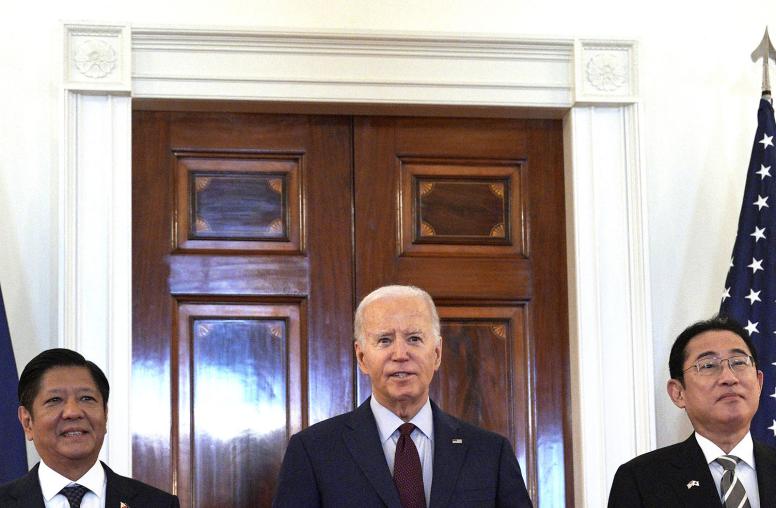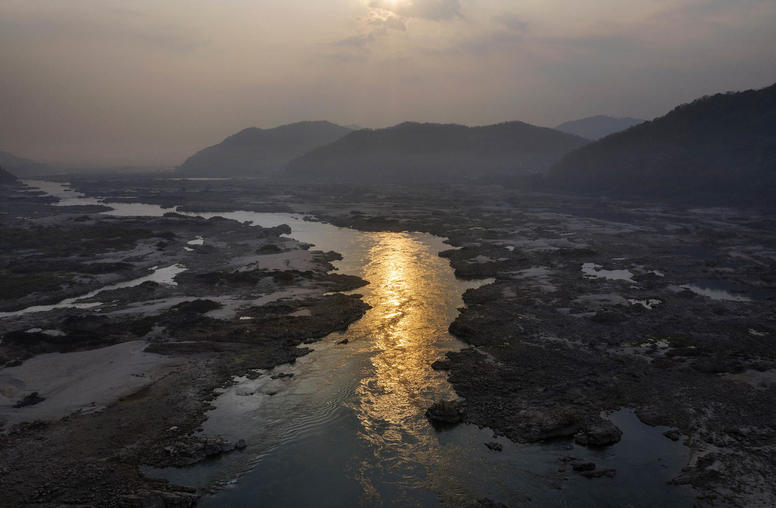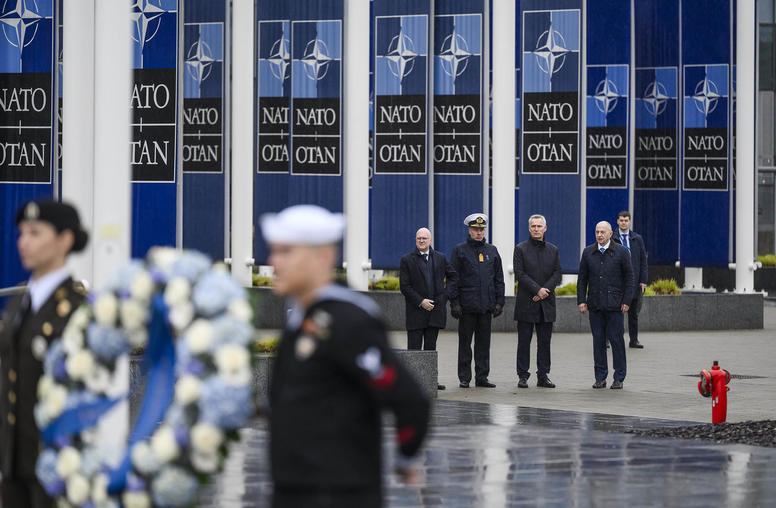China’s Evolving North Korea Strategy
Despite Pyongyang’s recent ballistic missile and nuclear activity and threats, Beijing continues to resist US requests to apply greater economic pressure on North Korea. This measured response aside, nuanced but highly significant changes in China’s thinking on North Korea are clear. China may now be willing to envision both a future in which North Korea is not a sovereign state and a greater role for the Chinese military in any contingency. This Peace Brief reviews this thinking as well as potential Chinese motivations to intervene militarily in a Korea contingency and the implications for US policy.
Summary
- Interviews with Chinese military and government officials and scholars suggest that China may now be willing to envision both a future in which North Korea is not a sovereign state and a greater role for the Chinese military in any contingency.
- Chinese interests in a Korea contingency have expanded beyond concerns about a refugee spillover to include national security and potential limits on China’s quest for regional power. These, combined with concerns about nuclear security, drive Beijing’s military strategy.
- China is unlikely to fight to protect the Kim Jong-un regime, nor do its defense or political officials expect to be invited to intervene.
- Chinese forces are preparing to fight their way onto the peninsula if Chinese involvement is deemed necessary to protect China’s national interests.
- Explicit planning for contingencies on the Korean peninsula is still too sensitive for China, but the United States and China could begin coordination efforts indirectly.
Introduction
On July 4, 2017, North Korea—the Democratic People’s Republic of Korea (DPRK)—successfully tested its first intercontinental ballistic missile. The United States strongly condemned the test, called for “global action” to address this “new escalation of threat to the United States,” and subsequently conducted joint air operations with Japan and South Korea—the Republic of Korea—near the Korean peninsula.1 About three weeks later, North Korea tested another missile that had the potential capability to strike major US cities, including Los Angeles and Chicago. In response, as a show of force, the United States conducted another live-fire (live ammunition) exercise with the South Korean military.
China’s response, more muted, followed its standard procedure of calling for restraint on all sides. Beijing continues to resist US requests to put greater economic pressure on North Korea, fearing that such a move could reduce Chinese influence on the DPRK and encourage far more reckless behavior. On August 5, 2017, after the second intercontinental ballistic missile test, the United Nations unanimously imposed new sanctions on North Korean coal, iron ore, lead, seafood, and labor. Chinese state media warned the United States against its “moral arrogance” over North Korea and noted that Washington should consider what initially prompted Pyongyang to seek nuclear capabilities.2 Even so, the Chinese are keen to demonstrate they are cooperating with international efforts to rein in North Korea—to include allowing the passage of new UN Security Council sanctions on the regime in August. A desire to send a strong signal of Beijing’s discontent with the DPRK’s ballistic missile and nuclear programs may also be a motivation.
Despite China’s standard response, nuanced but highly significant changes in its thinking on North Korea are clear. This Peace Brief reviews this thinking as well as potential Chinese motivations to intervene militarily in a contingency on the Korean peninsula and the implications for US policy.
More Room for Diverse Opinions
In peacetime, China hopes to maintain stability on the Korean peninsula and resolve the nuclear issue through dialogue and negotiation.3 But over the past three years, Chinese President Xi Jinping has been surprisingly vocal in support of Korean reunification in the long term—though through a gradual, incremental peace—even if it entails the demise of North Korea as a sovereign state.4 Polls suggest that Chinese public opinion generally supports moving away from North Korea.5 Some subsequently censored public posts even criticized the government for not taking a harsher stance against the Terminal High Altitude Area Defense and North Korea for testing nuclear weapons so close to China’s borders. Additionally, though it is still a minority viewpoint, some prominent scholars have been allowed to voice their support for abandoning North Korea officially to better pursue a courtship of South Korea.6
Nuanced but highly significant changes in [China’s] thinking on North Korea are clear.
Although no high-profile Chinese advocate a military response to North Korea, skepticism is considerable that disarmament will occur through negotiation. At the same time, Chinese military capabilities have greatly expanded over the past decade, and Beijing has begun to embrace missions that would have seemed unthinkable just a few years ago, raising the possibility of a more interventionist stance.
Emerging Motivations for Military Intervention
In a scenario involving North Korean collapse or the outbreak of war on the Korean peninsula, China is likely to intervene for three reasons. However, China is unlikely to intervene militarily in support of North Korea in a contingency, and most recognize that Chinese forces may even be opposed by North Korean forces.
First, and most widely reported, is the concern that instability and conflict on the peninsula could lead to refugees spilling over the border into China. If the domestic situation falls apart in North Korea, a large number of scattered military forces, and even organized forces, could attempt to enter China’s territory with weapons and other dangerous materials.7 To contain the potential influx of refugees, China has plans to seal the border and conduct border control operations—which may include moving Chinese forces at least fifty kilometers into North Korea—though the Central Politburo Standing Committee will ultimately decide whether to do so.
The refugee issue is only one of many that the Chinese leadership is considering, however. Another burgeoning concern is nuclear security. Chinese leaders are worried about cross-border pollution should the United States, Japan, or South Korea strike North Korean nuclear facilities, or should the DPRK use its weapons or attempt to sabotage the program in a crisis. This concern moved to the forefront after Pyongyang’s fourth nuclear test in January 2016 and quickly became a hot topic among military leaders, public intellectuals, and the public. After the fourth and fifth test in March 2017, the People’s Daily assured the public that the government had conducted tests on the water and air in seven provinces and found no unusual amounts of radiation.8 China announced in 2016 that it would create a force dedicated to nuclear emergencies, including responding to nuclear accidents in foreign countries.9 Chinese military officers have explicitly stated that contingency plans are in place for a mission to secure DPRK nuclear weapons and fissile material, and that they involve moving Peoples Liberation Army (PLA) troops at least one hundred kilometers into North Korean territory.10
Last, the PLA may move into North Korean territory to ensure a degree of control over the conflict and its outcome. Beijing fears that a denuclearized reunified Korea under American dominance would pose a threat to China’s northeastern border stability and limit China’s quest for regional power.11 Xi Jinping has been vocal about ensuring the rejuvenation of the Chinese nation and the return of China to its rightful place as regional hegemon. As one PLA officer said when asked whether China would target North Korean territory that included nuclear facilities, “Why should the United States be there but not us?” The future of Korea, and of US forces on the peninsula, could tip the balance of power and influence in China’s behavior. For this reason alone, some Chinese military leaders and scholarly elites argued, China will need to be involved in any contingency on the peninsula to ensure that Korea reunifies on terms favorable to Beijing. If that seems unlikely, reunification will be postponed and a pro-China regime likely put in power in North Korea. In the more diplomatic words of a think tank associated with the Central Military Commission, “If a neighboring country regime collapses, if the new regime undermines our national interests and territorial sovereignty, we shall resolutely counterattack…once we fight, we must win, and facilitate a long-term peace along the border.”12 The last thing China wants is North Korean instability or an outcome that strengthens the US role in the region.
Implications and Recommendations for US Policy, Planning, and Strategy
If the United States wants China to share the risks associated with pressuring North Korea, then it needs to present a vision of the aftermath that is more favorable to Beijing than the current scenario. If it were to credibly assure Beijing that it would militarily disengage from the peninsula after reunification, for example, China would no longer need a buffer state and could believe that a much-improved regional position would outweigh the costs of conflict. Although such a signal might be outside the bounds of US policy, it suggests what may be needed to get Beijing fully on board with pressuring North Korea to the breaking point. At the very least, Washington should commit to not stationing forces above the 38th parallel under any conditions (though this might not be enough of an incentive). Beijing is more likely to pressure Pyongyang and risk instability if it believes it stands to benefit regardless of how North Korea responds.
The United States should also not give up on efforts to coordinate contingency planning with China. Beijing may still be unwilling to do so given the sensitivity, but Washington could always attempt to make such guarantees privately and unilaterally. It could also pursue more indirect channels, such as civilian training or technical exchanges on nuclear issues, or support China’s expanded involvement in international nuclear security exercises. Both countries have also signaled intent to cooperate in countering nuclear smuggling, a channel that could be expanded. US experts and officials could also push to observe China’s national level nuclear emergency joint exercises, such as the Shendun series. The enhanced contact could then lead to a mechanism for improved crisis management, risk mitigation, and reducing the likelihood of miscalculation, ideally before both countries’ militaries find themselves operating on the peninsula.
Notes
- Barbara Starr and Ryan Bronwe, “U.S., South Korea drill as Tillerson calls for ‘global action’ on North Korea,” CNN, July 4, 2017, www.cnn.com/2017/07/04/politics/us-officials-meet-north-korea-missile-launch/index.html.
- “US needs to curb moral arrogance over North Korea,” Global Times, August 6, 2017, www.globaltimes.cn/content/1059936.shtml.
- For more on China’s North Korea policy, see Oriana Skylar Mastro, “Dynamic Dilemmas: China’s Evolving Northeast Asia Security Strategy,” in Joint U.S.-Korea Academic Studies: Rethinking Asia in Transition, vol. 27, ed. Gilbert Rozman (Washington, DC: Korea Economic Institute, 2016), 9–14.
- “Xi Jinping Delivers a Speech at Seoul University,” Xinhua Net, July 4, 2014.
- “Should the idea, ‘North Korea is China’s buffer,’ be reevaluated,” Huanqiu, September 24, 2016; “China is the biggest loser in North Korea Nuclear Tests,” Souhu Pinglun, September 10, 2016, http://star.news.sohu.com/20160910/n468127784.shtml.
- “Chinese Scholars, Beijing’s North Korea Policy Is a Total Failure,” New York Times Chinese, April 19, 2017; Yan Xuetong, “The Security Strategy Challenge China Faces in Its Rise,” Huanqiu, February 23, 2017.
- Qiao Zhongwei, Wang Jiasheng, and Zou Hao, Emergency Control in a Border Crisis (Beijing: Junshi kexue chubanshe, 2013), 10–16.
- “Ministry of Environment Protection: Environmental Impact Yet to Be Detected from North Korea’s Nuclear Test,” Renmin, January 6, 2016; “Ministry of Environmental Protection Ends Emergency Response to North Korea’s Fifth Nuclear Test, No Indication of Abnormal Radiation Level,” Renmin, September 15, 2016.
- “China Soon to Create Troops for National Nuclear Emergency Preparedness,” Renmin, January 28, 2016.
- Thomas Woodrow, “The PLA and Cross-Border Contingencies in North Korea and Burma,” in The People’s Liberation Army and Contingency Planning in China, ed. Andrew Scobell, Andrew Ding, Philip Saunders, and Scott Harold (Washington, DC: National Defense University Press, 2015), 210.
- Wu Zhicheng and Hong Jianjun, “Some Personal Thoughts on Peace and Security,” Contemporary International Relations 23, no. 6 (December 2013): 32.
- Zhongwei, Jiasheng, and Hao, Emergency Control, 29.
About This Brief
Based in part on field interviews in Beijing and Shanghai, this Peace Brief examines why China is likely to intervene militarily should conflict break out on the Korean peninsula. Oriana Skylar Mastro is an assistant professor of security studies at the Edmund A. Walsh School of Foreign Service at Georgetown University and was the 2016–17 Stanton Nuclear Security Fellow at the Council on Foreign Relations. She would like to thank Annie Kowalewski and Danni Wang for their research assistance.



